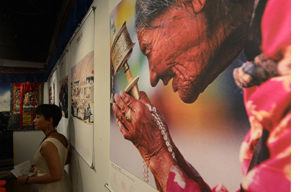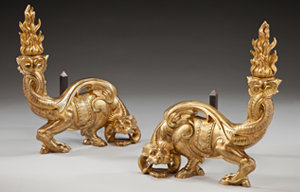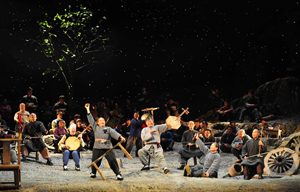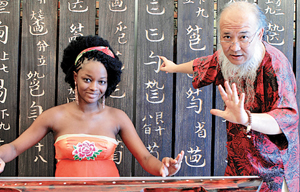
Germany was the first European country to establish stable relationships with Chinese artists, he says.
Eccher insists that Italy is one of the countries most interested in Chinese art.
"Several collectors and specialized galleries, such as Galleria Continua and Primo Marella, have opened branches in Beijing. In general, many galleries both in Europe and the United States have expanded their operations into China, an extremely creative part of the world nowadays."
Today's Chinese artists are at a riveting stage, with the majority being well-educated, according to Eccher.
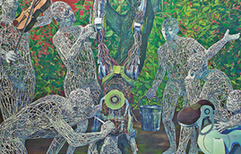 |
| Old nation's new Transfiguration |
"A-list Chinese artists know Western art history quite well, but are not affected by the very idea of the avant-garde, which has been introduced through contact with the West, since it does not belong to their own spirit and DNA," he says.
"That is why their signature iconography is much freer. That is why Chinese art is an incredible aesthetic laboratory in which artists can experiment with new interpretative methodologies."
The European viewer interacts with a Chinese painting in a less predictable way than when put in front of a contemporary Western art object, he says.
This makes this particular "Chinese experience" more challenging, he says.
It is almost obligatory now to mention the presence of Xu Bing and Cai Guoqiang, both in the first and second sections of the exhibition.
Xu, widely regarded as one of the most important artists of his generation for informing his work with language and history, presents his new multimedia installation Work on Site in Venice.
Cai, whose artistic language has a direct and deliberate reference to Chinese iconography (his gunpowder works are renowned across the globe) returns to Venice for the third time.
The first collective section titled Rediscover, which is organized by independent Dutch curator Karlyn De Jong, highlights the fact that many Chinese artists feel obliged to rediscover their own cultural roots as a source of nutrition for their work.
"Chinese art is visually quite different. Since it is so richly varied, and understanding it requires a lot of knowledge, it is an easy way out to just say it is 'not good'," De Jong says. "For me, art is always an expression of a human act, no matter whether I personally like it or not."
